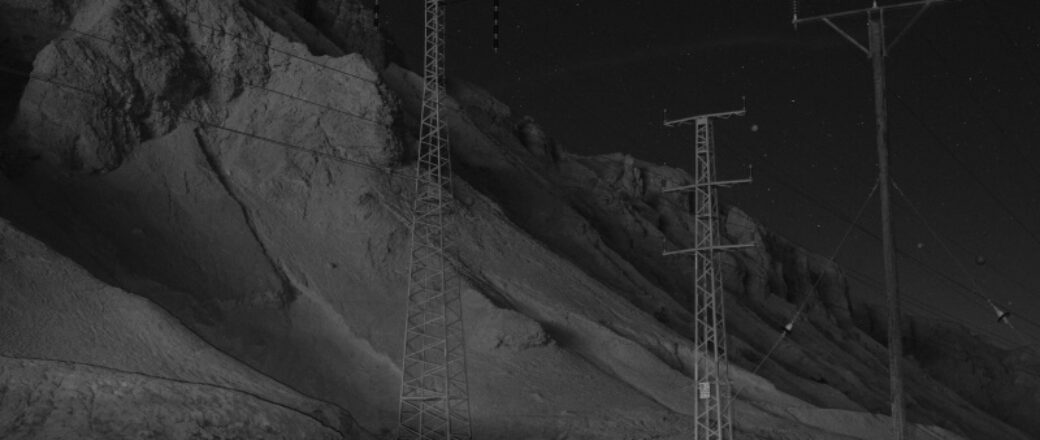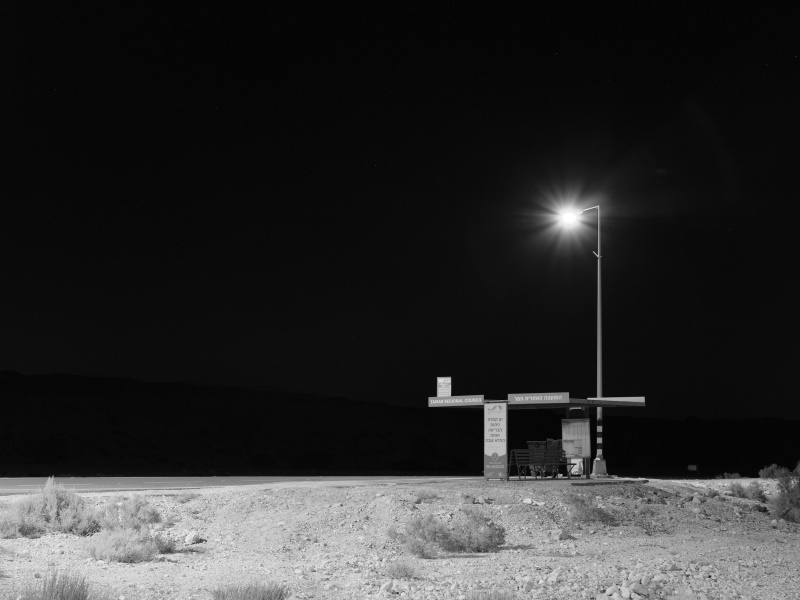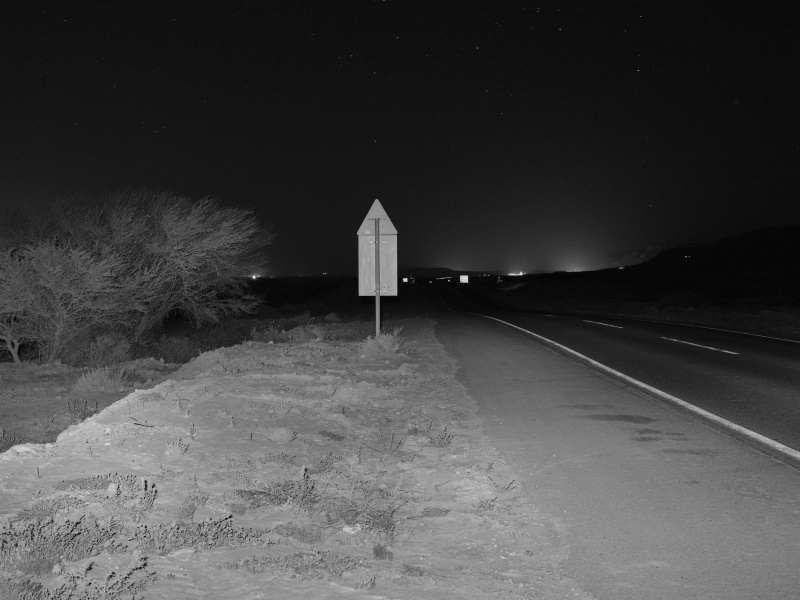For over ten years I have been doing photo workshops in the Israeli desert. Most of the workshops take place during the night because of the great heat that exists in the place. Summer heat may reach nearly fifty degrees Celsius in some places.
Throughout the winter, I do workshops between the floods in the area and in the summer time – focusing on star photography workshops. The desert is a great place for such photo workshops because the sky is without “light pollution” and you can see the stars in the sky very well. But whether it is a star workshop at night or whether it is a day photography workshop – the trip from the desert back home I always choose to do at night, I am also very tired and if a long trip on deserted roads is expected.
There are two main roads in the Israeli desert. The first is Route 40 and the second is Route 90. Route 90 crosses the entire length of Israel from the snowy Mount Hermon in the north to the tourist town on the southern tip of the country – Eilat.
Highway 90 is a nearly completely straight road with no turns, sometimes it feel like it lasts forever. There is little lighting at intersections while the rest of the road is very dark. In order to shoot in the dark sections along the road, I use the headlights of my car that are the only light source for tens of miles.
Because during the night apart from transport trucks there is not much traffic this is not too difficult task to create extended exposures to reach the desired lighting. In some sections, I even took pictures in the middle of the road because vehicles don’t go anywhere for even half an hour or more.
This road – Highway 90 is considered one of the most dangerous roads in the country because a lot of drivers fall asleep. Sometimes all the workers at the gas stations look bored (just like there environment that surrounds them). I have to stop myself at the side of the road every now and then to avoid falling asleep.
From time to time, old ammunition warehouses can be spotted from wars that existed in the area decades ago, or abandoned military places stands. They stand on the side of the road, rusting from the short winter rains. Road signs that do not know which of the drivers can see them in the darkness. They can be spotted only at the last minute because they cannot be discerned in the dark of night.
It is important to note that driving speed is not relevant. I can drive at twenty miles an hour to look for some traffic sign or spot on the road I wanted to shot, and I can travel at 100 miles an hour and there is no difference. If there was no speedometer in the car I don’t think I could have known what my travel rate was.
Bus stops that look deserted get light from the road lighting even though no one is going to wait for a bus to come and it seems that a bus is never really going to arrive.
Due to the quietness of the road during the night, the big electric poles can be heard buzzing loudly. All you have to do is open the car window while driving. Huge pillars of electricity that flow hundreds of miles south to remote, sleepy settlements. From time to time, I decide to deviate a bit and get close to one of these isolated settlements. The gate at the entrance is always closed and always lit with a yellow and weak light that looks like a small point of light away from the main road and not like an entrance to the settlement. This gives the feeling of a settlement populated by ghosts.
It took me a few years to understand why I sometimes insist on doing a big detour from the photography spots in the workshops I passed just to get to Route 90. There is something special about this road. This emptiness that exists almost depresses me and brings my mood down to the bottom of the abyss, but at the same time it also allows me to sink into thoughts for hours without interrupting me. I try to stay awake for many miles between one gas station and another which is difficult. One of my ways to stay awake is to break away from the reality around me. That doesn’t mean I’m not aware of where I’m driving or whether I’m zigzagging on the road. It is more like the state of moving the brain into an automatic state like a meditative action and creates a feeling that I have another head. So one head focuses on driving and maintaining vigilance and the other head can stroll through the endless streams of thought. It can even be fun. In almost every gas station I discover on the trip I stop to buy coffee. Every now and then I find myself jumping on the side of the road to “inject” blood. One night about two years ago, I suddenly realized why I love to drive on this road. This is because there is nothing along the way. There is nothing interesting. And that emptiness is the thing I fell in love with. It’s like hovering in a spacecraft. You cannot see the horizon during the night and the entire universe as unfolding endlessly.
I have a very big feeling of loneliness while driving on the road, sadly enveloping in me. Because the horizon always seems far away and I don’t really seem to be able to get anywhere, many times I have feel despair and a failure and have no hope for a better future. On the other hand, I discovered that at the same time, it is exactly the thing that also gives me hope. Just knowing that no one can find me here gives me a sense of a “safe place” and that’s how I came to the point that I love these nights. Nights of difficulty sitting on the wheel tired and sleepy. Along the way driving thoughts go through my head without me noticing them and when I get home I can’t even remember what I was thinking along the way. Thoughts that come with the same ease. Like clouds passing in the spring sky. Nobody ever noticed these clouds. It even puts me in a “dream ride ” mode. This whole trip is a dream, a dark and black dream that lasts for hours. I rarely even press the brake pedal in the vehicle, only occasionally before a sharp turn on the road or if a fox or wolf has unexpectedly crossed the black road. Because I travel slowly and look around most of the time, I have no reason to push the brake pedal’ it is enough to lower the leg from the gas pedal and not beyond. As I move north, slowly approaching the Dead Sea, you can find desolate pipes spread along sections of the road. These are pipes from the Dead Sea factories. Dead Sea. Don’t just call the sea of death. The factories that have received approval from the Israeli governments to do as much as they can with this treasure, are increasingly drying it with each passing year. The same desolate pipes scattered along the road move the salt water to the factories for tens of miles. The only railroad in the area stands deserted most of the night. Once a night, a freight train of phosphates travels so slowly that it can be catch up even by bicycle. The noise of the railway barrier descending and alerting drivers on the road is so loud that it can be heard from miles away. These freight trains are so old and rusty that if there was no lights on the road they could not be seen and as soon as they crossed the intersection they disappeared from view leaving only the noise of the wheels like old memory.
I still drive on this road every time I hold a photo workshop in the area. Continues to travel deep into the night until the sun rises above the horizon. I can’t give it up. About the sadness of the place. About the quiet and my ability to go wanders in thoughts of darkness.
– How and when did you become interested in photography?
During my art studies I was sent by one of the teachers at the art school to go and buy a camera. He literally dumped me in the middle of class and sent me to buy a camera. When I got back to class he shouted at me that instead of drawing I was walking around with a camera and that I would go back to work. Confused and annoyed I went back to drawing in class. When I got home I started playing with the camera and straight away I fell in love. I discovered new media to express myself. From this point I was drawn to the field of photography. It was a film camera and I had to learn on my own to work with film and understand aperture and shutter speed. But that was part of what got me excited. After a few years I understood why he sent me to go buy a camera. I thank him to this day for that
– Is there any artist/photographer who inspired your art?
I feel that artists from different fields influence my work or the way I see things and not only from the field of photography but also from the field of poetry. It is some of them: Dylan Thomas, Dante Alighieri, Joel Peter Witkin, Wynn Bullock, Francesca Woodman, Matsuo Basho, Sally Mann.
– Why do you work in black and white rather than colour?
It may sound a little weird but color makes me really kind of headache. It is irritating my eyes I have a hard time seeing it. Black and white makes me feel comfortable and quiet inside my head. I also feel it is many times more correct to describe my feelings and thoughts in monochrome.
– How much preparation do you put into taking a photograph/series of photographs?
I invest a lot in preparing for projects. Planning can sometimes take me a whole year even before I even take pictures. I plan by sketches, the light and shades and what appears in each picture. I can walk hundreds of miles for a single photo or sit in the studio for hours and adjust the lighting and assemble various objects and build them until I get to exactly what I saw in my head. I may find myself filming the same project over and over again until I am satisfied.
– Where is your photography going? What projects would you like to accomplish?
I am currently working on a project related to the mental crisis that has arisen in me following the Corona. It is in an advanced process of work. And on a project influenced by works of art from the Renaissance that deal with the suffering of the saints in Christianity
Website: www.guygevaart.com
























